Methane
A big deal but something we can do a great deal about, often at no net cost, often even increasing profits.
Methane (CH4) is a powerful greenhouse gas, much more so than carbon dioxide, but has a short lifespan in the atmosphere. It’s concentration in the air has more than doubled since pre-industrial times, causing roughly 30% of recent global warming1. The methane cycle includes natural sources and sinks but human activity is behind the increase. Methane is emitted from landfill sites as garbage rots, from fossil fuel infrastructure including abandoned wells and mines, from beef, dairy and lamb agriculture and from rice cultivation. Fortunately, there are viable economic solutions to all these human sources, making methane action an achievable ambition with a fast climate response.
Trends in Atmospheric Methane
Pre-industrial atmospheric methane was 729 ppb, but according to NOAA this has climbed to 1,935 ppb as of February 20252. That’s over 2.6 times higher. During the late 20th century the rise was due to rapid expansion of agriculture and fossil fuel extraction but through clean air initiatives, reductions in gas flaring and other efficiency improvements, this levelled off to an equilibrium after the turn of the century. From 2006 however the rate has increased as natural emissions increase due to global warming, changing ecosystems and increases in human emissions. This is shown by isotopic analysis of atmospheric methane. Human caused emissions represent 76% however, so mitigation action can still have a significant impact.
Greenhouse Gas Potential
Methane has a steady state lifetime in the atmosphere of about 9 years. 90% of the loss in the atmosphere occurs through reaction with hydroxyl radicals (OH) in the lower atmosphere, 5% by bacterial soil oxidation and the rest through chemical reactions in the upper atmosphere.
When it is emitted, over the first year methane has a CO2 equivalent value (CO2e) of 120. This means that 1 tonne of methane in the air traps 120 times as much heat as 1 tonne of CO2 during that first year. Due to its limited lifespan however, after 20 years most of it has been converted or absorbed, so this value drops to 84 averaged over the 20 years. Over 100 years, the value has dropped further to just 28.
You’ll have noticed that concentrations are measured in parts per billion (ppb) for methane as opposed to parts per million (ppm) for CO2. It’s this very high equivalence that makes it important though. Since pre-industrial times, methane has risen 1.2ppm compared to CO2’s 152ppm but factoring in the equivalence this equates to 101ppm CO2e over 20 years. The IPCC calculate that methane has been responsible for 30% of the warming over recent decades.
Adding the increases in CO2 and methane together is equivalent to a 253ppm increase in CO2 which is almost double the concentration in the pre-industrial (278ppm). Climate sensitivity is a measure of the climate’s response to a doubling of CO2 with a temperature rise of between 3º and 4.5ºC (very likely to be at the higher end). It’s clear from this that keeping temperatures below 2ºC as mandated by the Paris Agreement cannot be achieved without addressing methane emissions.
The high absorption of infrared radiation does bring with it an opportunity. It makes large emission sources much easier to detect. 25 satellite missions can detect methane point sources using infrared imaging and even handheld devices are used to detect and report leaks from pipelines, extinguished flares and abandoned wells. Many are open source such as: https://www.methanesat.org
The leak detected here has the equivalent emissions of 26,000 VW Golfs (typical small petrol car) driving continuously. Leaks hundreds of times worse are being routinely detected.
Dedicated Methane Hunters, some employed by fossil fuel companies, detect and report leaks using portable equipment.3
Human Emissions and Opportunities
Recognising the importance of methane, the Global Methane Pledge was launched at the Glasgow COP26 in 2021 and has now been signed by 159 countries4. The participants have agreed to take voluntary actions to contribute to a collective effort to reduce global methane emissions at least 30 percent from 2020 levels by 2030. This is a global, not a national reduction target. Almost half way through the period however, few countries or companies have formulated real plans that match the commitments with very few verifiable reductions. Under-reporting appears systemic which doesn’t help.
Energy Sector
The energy sector, including oil, natural gas (which is methane), coal and biomass accounts for 35% of human methane emissions according to the International Energy Agency 2025 Global Methane Tracker report5. Record production of oil, gas and coal, combined with limited mitigation efforts, has kept emissions above 120 million tonnes (Mt) annually. Abandoned wells and mines contributed around 7% to these emissions in 2024. Bioenergy production and consumption results in a further 20 Mt of methane, largely from the incomplete combustion of traditional biomass used in cooking and heating in developing economies.
Methane emissions from the sector are often under-reported though as a recent study of Canadian abandoned fossil fuel facilities demonstrated6. The study found that actual emissions from non-producing wells were seven times higher than reported. There are roughly 8 million abandoned mines and wells globally emitting an estimated 8 Mt of methane each year. Plugging these leaks would be the equivalent of removing 7.7 million petrol cars from the road.
The good news is that all the technology required to detect and fix 70% of fossil fuel related leaks already exists and is proven to work. This is evident in the disparity of emissions across different regions. Norway for example has very low leakage compared to Turkmenistan. The IEA estimate that 35Mt of emissions could be avoided at no net cost since the costs of abatement measures are less than the market value of the additional methane gas captured and sold or used (Equivalent to removing 33.5 million petrol cars from the road, and for free).
Policy is a key requirement to drive change. Lost potential profits from leakage is one driver, but mitigation efforts are slower than required to meet the Global Methane Pledge. Perhaps leakage fees, fines for inaction following notification of a detected leak or quality requirements based on whole supply chain leakage need to be implemented more widely to force the necessary action.
Agriculture
Agricultural emissions are principally from two sectors, ruminant animal farming which includes beef, dairy, lamb and wool, and water-based crops, mainly rice cultivation.
Ruminants like cattle and sheep have a digestive tract that ferments their food before passing to the rest of the gut. This fermentation results in methane production which the animals belch to the air. The cattle population has been growing globally to 1.57 billion animals by 2023, but follows a mainly linear trend this century so does not account for the acceleration seen in the top graph.7 It is still a major contributor to human methane emissions, reaching over 110Mt per year by 2023. (Equivalent to over 100 million petrol cars)
Efforts have been made to use modified feedstocks which don’t require as much fermentation and significantly reduce this methane belching. The economics are interesting. In dairy production, the fats, proteins and carbohydrates in the milk are made principally of Carbon, Hydrogen and Oxygen. Lactose for example has the chemical formula C12H22O11. All the methane CH4 that is being wasted in burps, could be going into milk production. A dairy cow will burp up to 700L per day of methane accounting for up to 13% of the digestible feed8. The same principle applies with fat and muscle growth for beef and lamb. Research into methane inhibiting feed additives and alternatives is therefore vital. There is tremendous interest in using Asparagopsis, a type of red seaweed that can be cropped or grown in tanks, as a methane mitigating feed additive because it can be naturally sourced and is “generally recognised as safe” by some regulatory authorities.
The other end of the animal is also an issue. Cow dung emits methane as it decomposes especially if carried out anaerobically. Methods are being developed to deal with these emissions by trapping the gas and either converting it to fuel or burning it in a turbine to generate electricity. A recent study of such digesters in California reported an 82% reduction in emissions from this source.9
Rice is the world’s third most produced cereal crop at 530 million tonnes last year. Its cultivation is also a major methane emitter accounting for 12% of human emissions.10 Rice grown in flooded paddy fields creates anoxic conditions in the soil which favours methane producing microbes. Different varieties of rice are associated with different emission levels, so low-methane varieties are being developed, some with far less water requirements. A 2024 study showed methane reductions of 70% suggesting that further hybridisation has the potential for both higher yields and lower emissions.11 Another win win for the producers.
An additional problem with rice cultivation is the remaining stubble and straw, roughly the same weight as the harvested rice. Currently, to clear fields for future crops, farmers either burn the rice straw, which results in significant carbon dioxide emissions as well as methane, carbon monoxide, nitrogen oxides, sulphur oxides, and particulate matters, or they flood the field to encourage swift decay, which also leads to extensive additional methane emissions. Better practice utilising the stubble as mulch has been found to reduce emissions by 78% while increasing profits by up to 20% through fewer input costs and increased yields.
Waste
Landfills used for waste management are the third largest human related methane source in the US, accounting for over 14% according to the EPA12. In addition to the climate impacts, gasses escaping from landfills is often an unpleasant foul mixture with air quality and public health implications. As the mainly organic matter decomposes, conditions quickly become anoxic favouring the methane emitting microbes. Fortunately through good site construction, this gas can be captured and processed to make fuel and generate electricity.
The situation outside the US is worse. In total waste generates 20% of human methane globally. Many sites in the developing world and some in the developed world are not capped and so vent their gas straight to the atmosphere13. Even bulldozing soil over the top would make a substantial difference since soil microbes would convert the leaching methane to CO2. With proper capping and treatment, gas could be made available to poor communities for energy and cooking.
Some Progress
In addition to the Global Methane Pledge, China has included methane in its Nationally Determined Contribution emissions targets. This is the first time that all greenhouse gases from all sectors have been included in national targets. An example of how they are achieving this can be found in their coal mines which need methane extraction for safety reasons in order to avoid explosions. By collecting the methane and burning it they are using the power to run the extraction pumps, saving money and halving the emissions in the process.
The projected time to net-zero is too slow to leave methane to itself in the hope that it will decrease as our use of fossil fuels reduces. More determined policy and initiatives will be required.
Natural Sources
For completeness, it’s worth touching on the natural sources of methane. Much of the acceleration observed in the atmospheric levels over the last 20 years is believed to be driven by increased emissions from wetlands and permafrost melt. Both these sources are highly likely to increase as the climate continues to warm.
Methane is thought to be a major contributor in the processes that switch the planet from a glacial state to an interglacial one. These glacial termination events are observed in ice core bubbles and occur with sea level rise and increases in rainfall that swamps low lying plains. Kicked off by the planet’s orbital cycles, the jumps in resulting methane acts as a powerful feedback further accelerating warming and ice melt. The last termination event at the start of the Holocene saw methane concentrations increase abruptly by ~250ppb at rates of up to 6 ppb/year. Today’s increase of 1,200 ppb in less than two centuries with a current ten year average increase rate of 11 ppb/year is therefore way beyond these natural spikes and a major concern.
To find out more about termination events and modern natural methane rises, I can recommend this 2023 paper by Euan Nisbet et al.14
Isotopic analysis over the last 2 decades points towards tropical wetlands being a key driver in the accelerating methane concentration. Xin Lin et al. added to this conclusion by showing that concentrations were rising fastest in tropical and boreal water inundated areas of the world15. A recent paper has questioned this however pointing towards the rise of shale gas extraction coinciding with the acceleration over the last two decades.16 Both are probably true.
Either way, the acceleration and extremely high concentrations increase the need for more urgent action on the human caused emissions, since these are the aspects we can do something about quickly.
Conclusions
Methane is an often overlooked greenhouse gas but is a major contributor (30%) to the current accelerating warming. Human emissions add to an increasing natural emission rate. Methane levels are known to be an important amplifying feedback in pushing the climate from glacial to interglacial settings. Today’s levels and the rate of increase are far higher than geologic records shows for these termination events. We are already in an interglacial, so where would a termination event take us?
Nearly all the current human emission sources, including oil and gas infrastructure, abandoned mines and wells, beef and dairy farming, rice cultivation and waste management could easily and cheaply reduce a significant proportion of their emissions. In a great many cases, across all sectors, these approaches would increase revenue and productivity.
These actions are a vital part of achieving the Paris climate goals. Staying under 2ºC is impossible without addressing methane emissions. It’s not enough to assume that emissions will naturally drop with fossil fuel reductions, especially given the emissions from agriculture and waste management, not to mention increasing natural sources as the planet continues to warm.
Reducing methane emissions is not a substitute for reducing CO2 emissions but it could buy some time if it is carried out with the haste set out in the Global Methane Pledge. It’s time for countries to start living up to the pledges they have made. Most of the actions are ‘no regret’, so let’s just get on with it.
If you’d like to see see where the methane sources are where you live, this website is a good place to start: https://data.carbonmapper.org/#1.05/18.2/50.5
IPCC Sixth Assessment Report Working Group 1: The Physical Science Basis, 2021 https://www.ipcc.ch/report/ar6/wg1/
NOAA Global Monitoring Laboratory https://gml.noaa.gov/ccgg/trends_ch4/
https://newsus.cgtn.com/news/2022-11-12/Methane-hunter-chases-down-invisible-pollution--1eSPix8ZVHW/index.html
Global Methane Pledge https://www.globalmethanepledge.org
IEA Global Methane Tracker 2025, https://www.iea.org/reports/global-methane-tracker-2025
Louise A. Klotz et al. Sevenfold Underestimation of Methane Emissions from Non-producing Oil and Gas Wells in Canada 2025 ENERGY AND CLIMATE April 29, 2025 https://pubs.acs.org/doi/10.1021/acs.est.4c05602
Johnson, K.A., and Johnson, D.E. (1995). Methane emissions from cattle. J Anim Sci 73, 2483-2492.
Michael V. Rodriguez et al. Anaerobic Digester Installation Significantly Reduces Liquid Manure Management CH4 Emissions at a California Dairy Farm, 2025, https://doi.org/10.1111/gcbb.70047
Jia Hu, et al., A low-methane rice with high-yield potential realized via optimized carbon partitioning, Science of The Total Environment, Volume 920, 2024, 170980, https://doi.org/10.1016/j.scitotenv.2024.170980
Lin, X., Peng, S., Ciais, P. et al. Recent methane surges reveal heightened emissions from tropical inundated areas. Nat Commun 15, 10894 (2024). https://doi.org/10.1038/s41467-024-55266-y
Benjamin T. Uveges et al. Fossil fuel methane emissions likely underestimated in a model based on atmospheric δ13C trends, 2025, https://doi.org/10.1073/pnas.2507837122
Nisbet, E. G., Manning, M. R., Dlugokencky, E. J., Michel, S. E.,
Lan, X., Röckmann, T., et al. (2023). Atmospheric methane: Comparison between methane's record in 2006–2022 and during glacial terminations. Global Biogeochemical Cycles, 37, e2023GB007875. https://doi.org/10.1029/2023GB007875






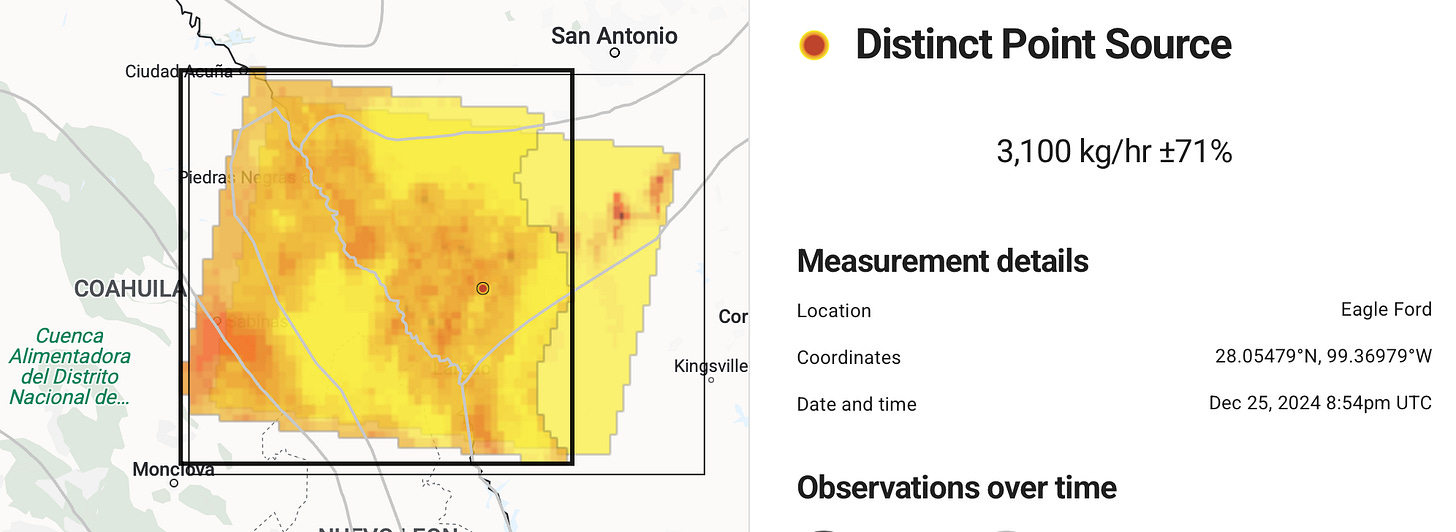
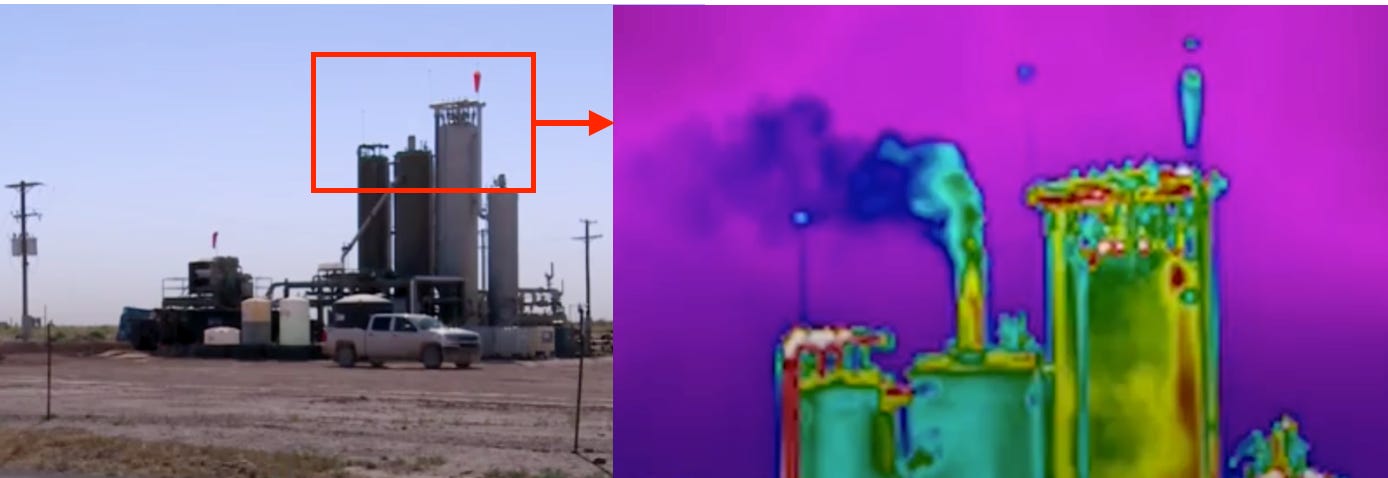
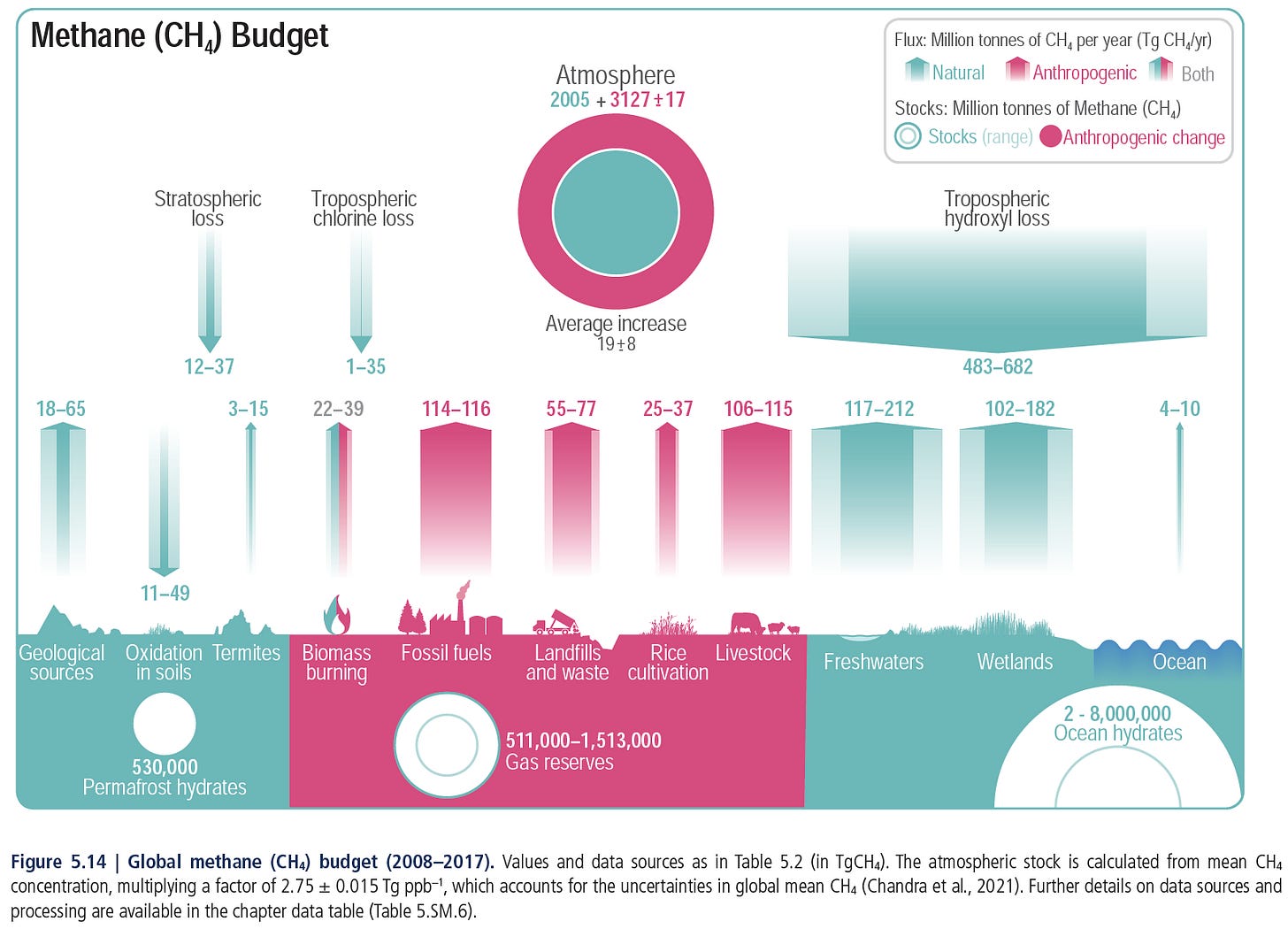
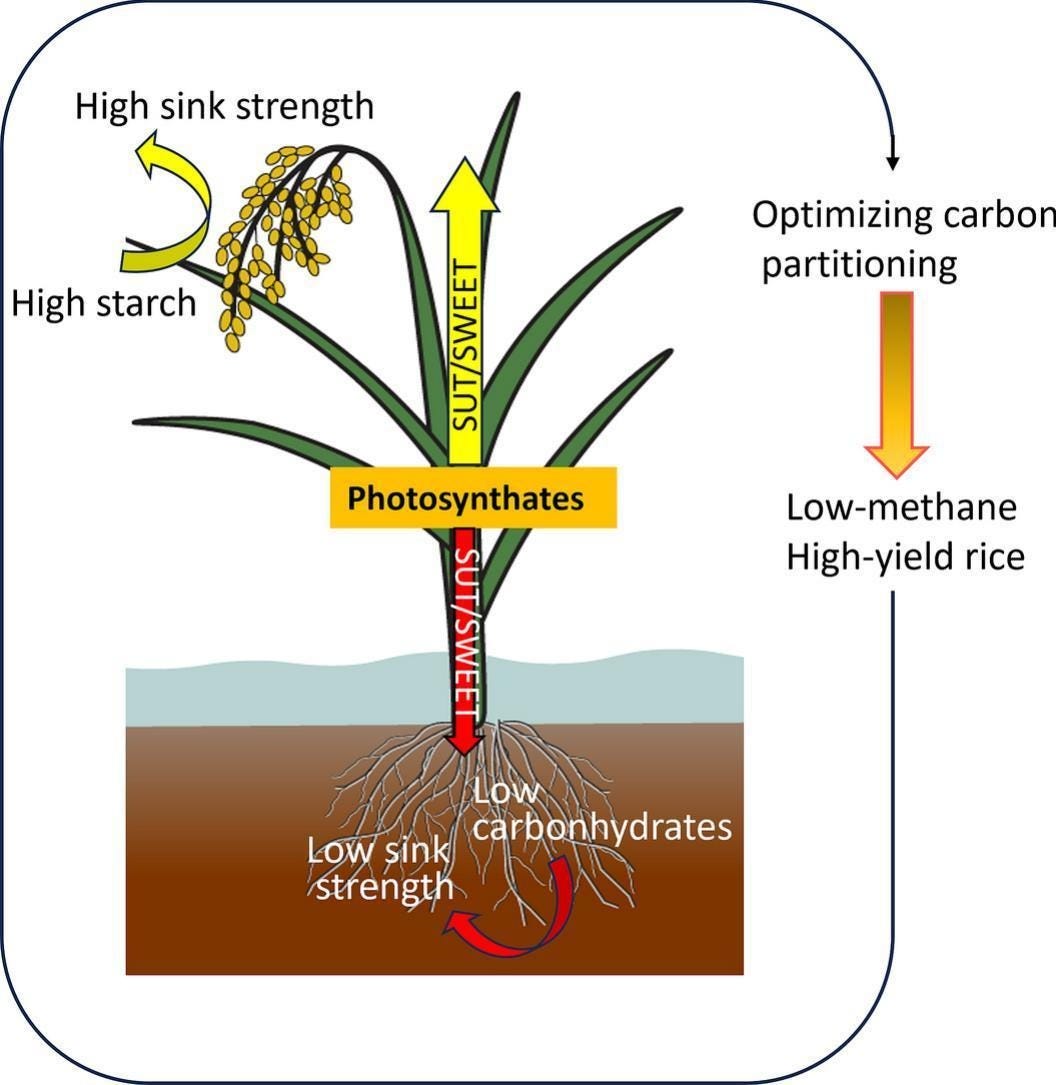
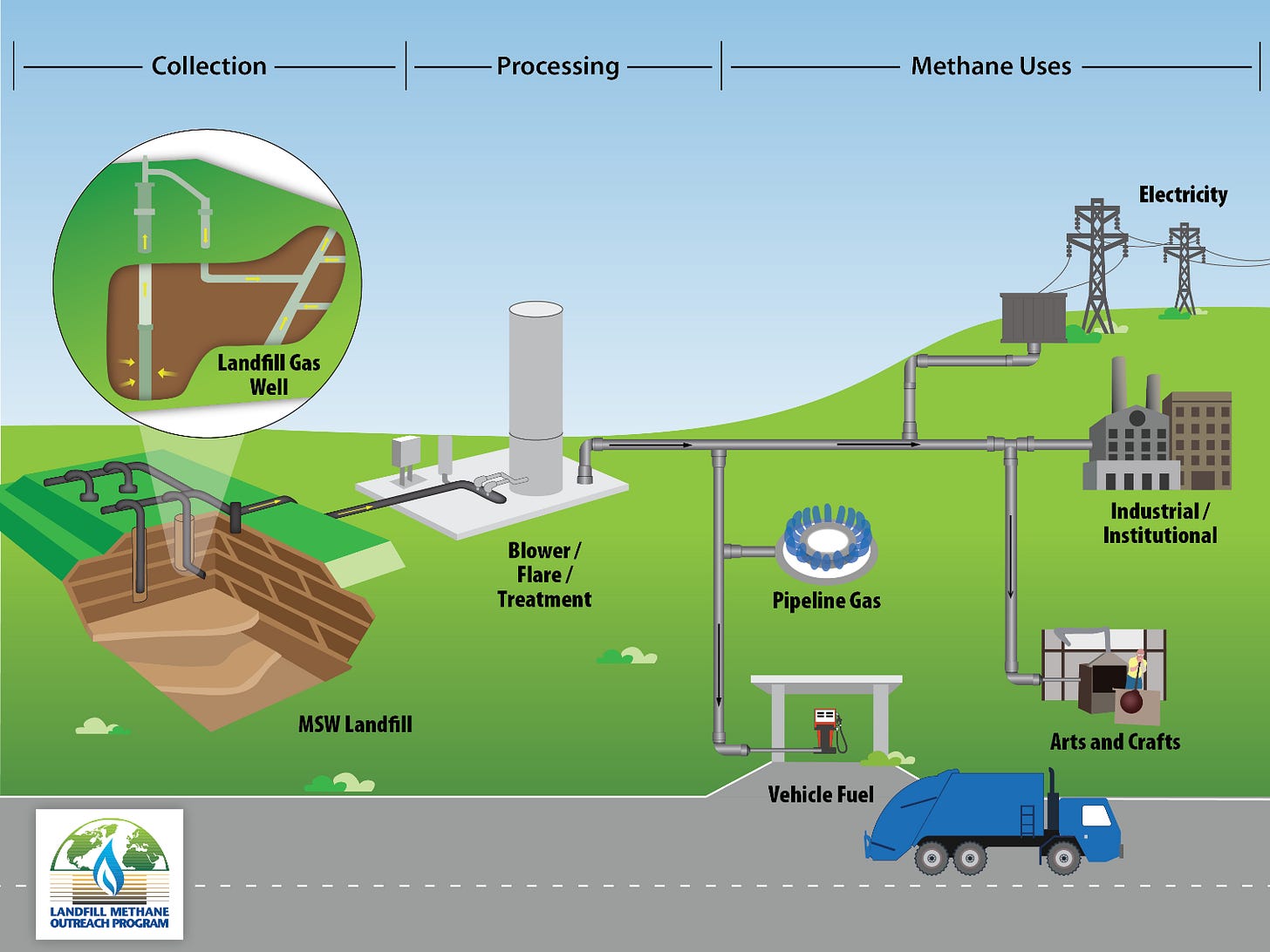
Your article indicates there are paths to reducing the methane ppm but the roadblock is that political will is often not sufficient to overcome the powerful economic forces that would have things remain as they sre
HI Tom, did a bit of research around the 1999-2005 pause and it may be down to the phasing out of ch3 ccl3 which was an industrial solvent that breaks down the ozone layer, which may have lead to a new equilibrium with methane breakdown. Another interesting side note is the European heat wave of 2003 and terpene stress release from northern hemisphere conifers and the interaction with lower atmosphere methane may have resulted in 2004 measuring as a methane fall. So much to unpack here, but if this is the case our fires across the north could not be helping matters destroying all this potential mitigation. Thanks for the interesting read